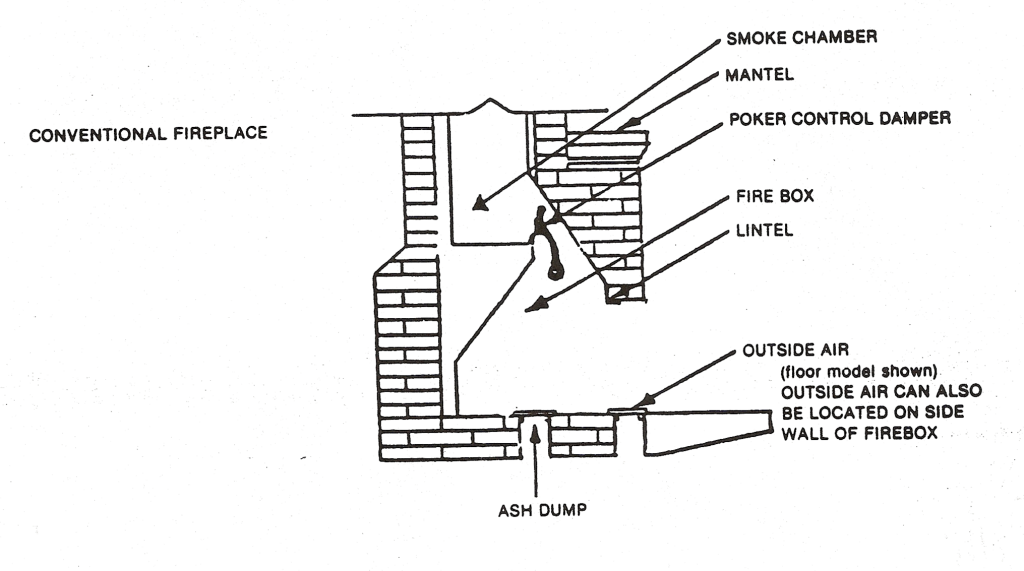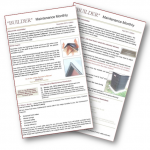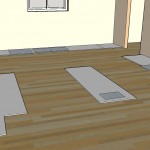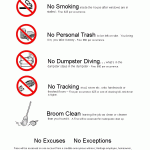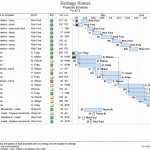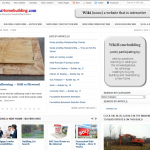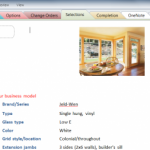Pre-fab wood burning fireplace
Conventional masonry fireplace
Wood burning fireplace operation and maintenance
Performance Standard: HBR article – Not listed
The gas fireplace will operate as intended.
Homeowner Operation and Maintenance
If a gas burning fireplace is installed in your home, its operation is demonstrated during the final walk through (if the set up is complete). If set up was not complete at your walk through, the fireplace will be demonstrated when the installer meets with you to set it up after closing. Read and follow all manufacturers’ directions carefully. Fireplaces are not intended to be the sole heat source in the home.
A slight delay between turning the switch or remote on and flame ignition is normal. The flames should ignite gently and silently. If you notice any deviation from this and any gas smell, immediately shut off the switch and report it to National Grid and BUILDER.
Condensation on glass panel or doors is normal and will dissipate after the fire has burned for a few minutes.
Caution: The exterior vent cover for a direct-vent gas fireplace becomes extremely hot when the fireplace is operating.
BUILDER Limited Warranty Guidelines
The fireplace should function properly when the manufacturer’s operating instructions are followed.
Glass Doors – During the final walk through we confirm that glass fronts are in acceptable condition.
Pre-fab wood burning fireplace
Performance Standard: HBR articles 20-2 to 20-5 Click icon to view book 
Smoking – Intermittent smoking caused by wind conditions, atmospheric pressure can cause temporary negative draft.
Environmental obstructions such as large nearby trees, buildings, or hills can cause continuous negative draft. Continuous negative draft is not acceptable.
Damaged Refractory Panels – Damage noted at the final walk through will be corrected. If refractory panels crack or break after the initial burning, contact the manufacturer.
Air Infiltration into Living Area – Some Air Infiltration is normal and acceptable.
Paint Finish of Unit is Scratched or Damaged – Paint finish of unit will be in good condition at time of the final walk through.
Broken or Inoperable Glass Doors or Fan Kits – Glass doors and/or fans will be in good condition at the time of the final walk through.
Notes
The construction practices of today’s fireplaces are tightly regulated by the New York State Uniform Fire Prevention and Building Code. Although, today’s fireplace is constructed with safety foremost, the maintenance and proper tending of the fire are essential. By-products of combustion – soot, unburned carbon and creosote will accumulate along the flue liner. This build-up can occur quickly or over a period of years. By-products of combustion will ignite if they become hot enough.
BUILDER Limited Warranty Guidelines
Damage and/or defects noted during the final walk through will be corrected.
BUILDER will arrange for a determination of a cause of the continuous negative draft condition and correct where possible only during the Warranty Period.
BUILDER is not responsible for any chimney fires or any damage to persons or property occurring as a consequence of any such chimney fire.
BUILDER is not responsible for any downdraft caused by wind conditions or atmospheric pressure or any damage to person or property occurring as a consequence of any such downdraft.
BUILDER strives to provide accurate, complete, and useful information. However, BUILDER makes no warranty, expressed or implied, with respect to the usefulness or effectiveness of any information, method, or process disclosed in this material. Nor does BUILDER assume any liability for the use of, or for damages arising from the use of, any information, methods, or process disclosed in this manual.
Conventional masonry fireplace
Performance Standard: HBR Articles: 20-1 to 20-5 Click icon to view book 
Separation of Chimney from House – In accordance with the building code, the chimney and house are to be built independent of each other. It is normal for slight separation to occur due to differential movement of the wood and masonry.
Smoking – Intermittent smoking caused by wind conditions, atmospheric pressure can cause temporary negative draft.
Environmental obstructions such as large nearby trees, buildings, or hills can cause continuous negative draft. Continuous negative draft is not acceptable.
BUILDER Limited Warranty Guidelines
Damage and/or defects noted during the final walk through will be corrected.
BUILDER will arrange for a determination of a cause of the continuous negative draft condition and correct where possible only during the Warranty Period.
BUILDER is not responsible for any chimney fires or any damage to persons or property occurring as a consequence of any such chimney fire.
BUILDER is not responsible for any downdraft caused by wind conditions or atmospheric pressure or any damage to person or property occurring as a consequence of any such downdraft.
BUILDER strives to provide accurate, complete, and useful information. However, BUILDER makes no warranty, expressed or implied, with respect to the usefulness or effectiveness of any information, method, or process disclosed in this material. Nor does BUILDER assume any liability for the use of, or for damages arising from the use of, any information, methods, or process disclosed in this manual.
Homeowner Operation and Maintenance
Your fireplace has been constructed in accordance with New York Uniform Fire Prevention and Builder’s Code, which Code shall comprise the Performance Standard. Unless otherwise noted in the final walk through, the fireplace is free from defects and structurally sound.
Accumulations of Combustion By-products – By-products of combustion (including soot, unburned carbon and creosote) will accumulate along the flue liner. Depending on use, this accumulation may build up quickly or over a period of years, and may ignite if it becomes hot enough.
Cracks/Voids – Cracks or voids in the flue liner may develop from natural causes or from misuse of the fireplace by the Homeowner. Any such cracks or voids, especially if they penetrate the flue liner, may present or increase a danger of creating a chimney fire, especially if the liner has accumulations of combustion by-products.
Chimney Fires – Chimney fires may be caused by accumulation of combustion by-products along or in conjunction with other factors, including cracks or voids in the flue liner.
Downdrafts – Certain wind conditions may create a downdraft in the chimney flue while the fireplace is in use, preventing smoke and other combustion gases from going up the chimney.
Ashes – Periodically you will find it necessary to remove ashes from the firebox, always place and store the ashes in a metal container away from combustibles. Particles of the coals in the ashes can remain red hot for days. If your fireplace is equipped with an ashdump, discard ash into the ashdump. Care should be taken not to confuse the ashdump with a floor model outside air intake.
Chimney Fire – If a chimney fire should ever occur, IMMEDIATELY remove your family from your home and call the fire department. It is required by New York State Uniform Fire Prevention and Building Code to report any chimney fire to your local building official.
Inspection – To avoid potential problems, a routine system of maintenance must be established. Professional Chimney Sweeps should be consulted regarding inspections and maintenance procedures based on your particular use of the fireplace.
Maintenance – Because of the efforts of the building industry, today’s fireplaces are as safe and as aesthetically pleasing as practical. The ultimate responsibility for the safety of the fireplace lies with the homeowner. Safe operating procedures are simple and the little maintenance required will guarantee the safety of your family.
Safety – With safety foremost in mind, if you have any questions as to the structural integrity of the chimney or flue liner, discontinue use of the fireplace IMMEDIATELY until a professional mason or a certified chimney sweep has made an inspection and determined it is safe to use.
Screen – To improve the safety and efficiency of your fireplace it is advisable to use a firebox screen. Keep the screen closed when the fire is burning.
Starting a fire
To lay a good fire several simple procedures should be followed. Leave approximately two inches of ashes from a previous fire on the floor of the firebox, bank a heavier layer of ashes against the back. The ashes will help reflect heat back into the room and provide a bed for the hot coals.
Care should be taken not to overload the firebox with paper, kindling, and wood. A fire, although requiring quick combustion to start your initial logs, must be gradually built-up to its peak size.
Use a small amount of paper and a moderate number of kindling wood pieces to lay down the base. Place three small split logs directly on top. Space the logs to allow air to flow freely. Before lighting the paper make certain that your damper and your outside air intake are open.
Use a wadded paper wand to light the fire. Hold the burning wand at damper level to start the draft, and then lower it to the paper/kindling stack. Never use flammable liquids to ignite the fire. Do not burn trash, coal, or dimensional lumber (including small amount of kindling) in your fireplace. Do not close the flue damper until there are absolutely no burning charcoal embers left. When the fire is completely out, shut the damper and outside air kit.
Wood – Much of the performance and the enjoyment you will receive from your fireplace is determined by the quality of the wood you burn.
When a tree is first cut, it may have a moisture content of 100%. This means that the water and wood are present in equal amounts. Dry, well-seasoned wood will give you the most efficient fire and is your best safeguard against the formation of creosote.
It is important to condition wood fuel to an air dried moisture content of 15 to 25%. This may be reached in six months to one year depending on drying conditions. All woods produce some creosote during combustion. Green or wet wood can result in more creosote than properly aged or dry wood. The moisture that is contained in wood must evaporate before the wood will burn properly. Split dry wood burns cleaner and more evenly than wet or round sticks.
